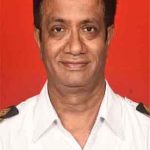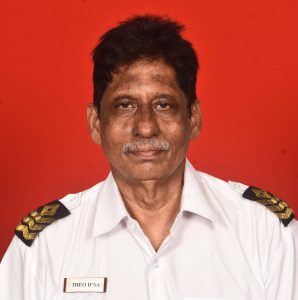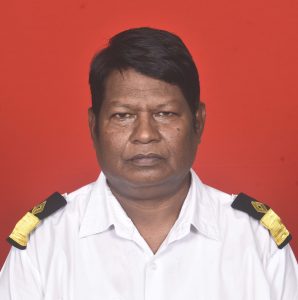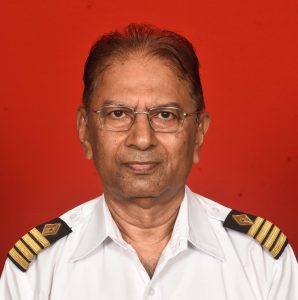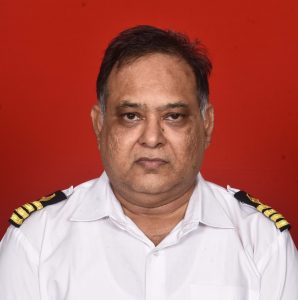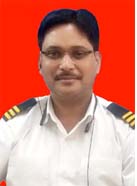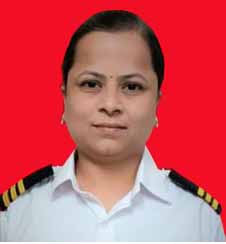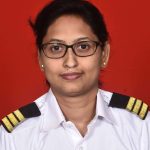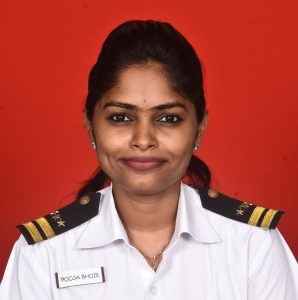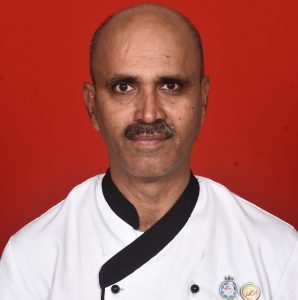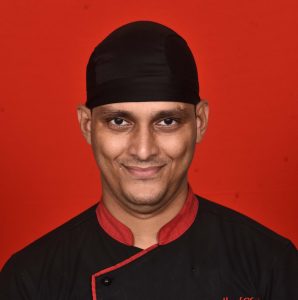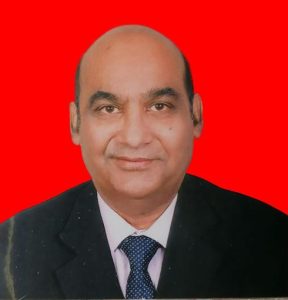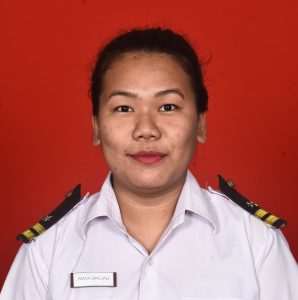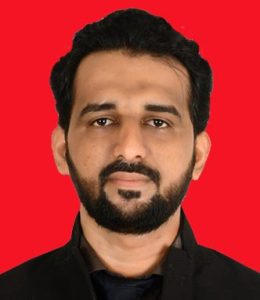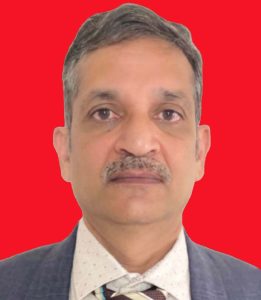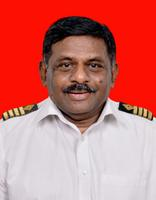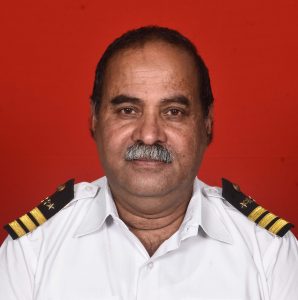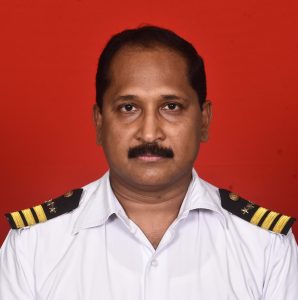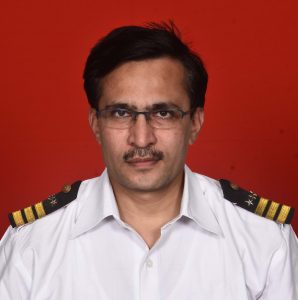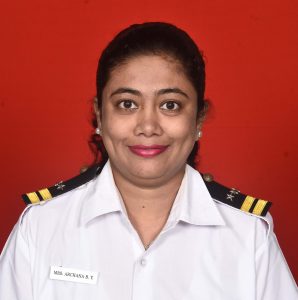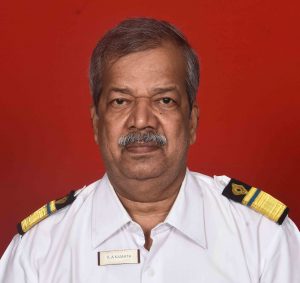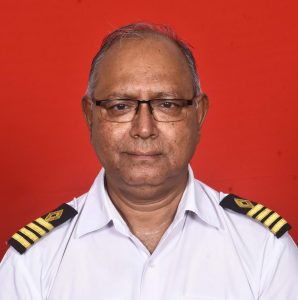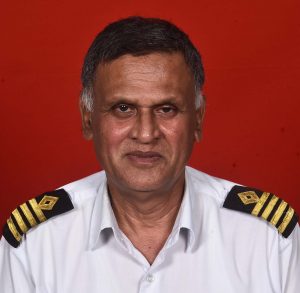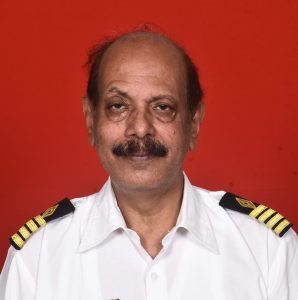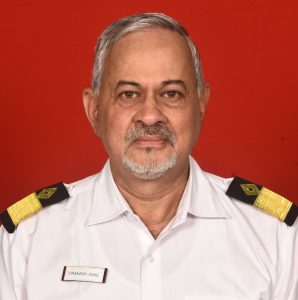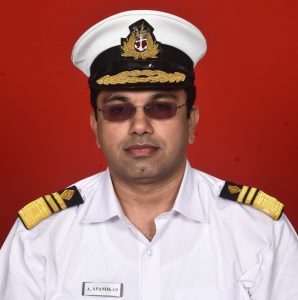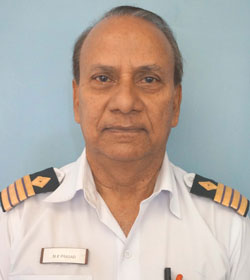Training Ship Rahaman has its beginnings in the year 1910 when Haji Ismail Yusuf, the proprietor of the Bombay Steam Navigation (BSN) Company decided to establish a Marine
School as a charitable institution at Rashid Mansion, Worli Point, at the then Bombay as a debt of gratitude to the seafaring community who had served loyally on the Company’s ships. The purpose was also to encourage the orphans and wards of the seafaring community, irrespective of caste, creed or religion, to follow in the footsteps of their forefathers at a time when indigenous mercantile marine of the country was experiencing a shortage of trained deck hands and officers.
With the demise of Haji Ismail in 1912, it fell upon his son Sir Mohamed Yusuf to pursue the dream of his father. He shifted the school to the Nhava Island, situated off the Bombay Harbour, which was purchased by the Family in 1883 and it was housed in the erstwhile bungalow of his late father. He also commenced the construction of various buildings including residential blocks and a hospital which was named the Fatama Banu Hospital in the memory of his mother. He also founded a Marine Museum in 1912 which was also housed in the bungalow of his father at a time when the concept of a museum was not very popular and is now India’s oldest marine museum. In the meantime he sold off his share of the BSN Co. and donated the entire proceeds for the construction of the Ismail Yusuf College in Jogeshwari, Bombay. In 1914, the then Government of Bombay officially permitted Sir Mohamed Yusuf to run a Marine School in Nhava. In the year 1915, Sir Mohamed Yusuf was conferred with the ‘Knight Bachelor’ in recognition of his educational and philanthropic activities.
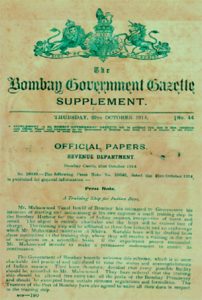
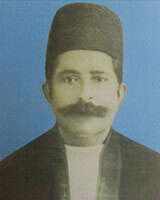
Sir Mohamed Yusuf
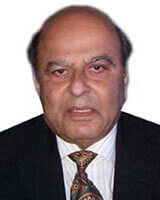
Shri A.Rashid A. Yusuf
On December 4th 1918, a petition was submitted to the Governor of Bombay by about 650 seafarers of the country for establishing a marine training institution for Indians. However as no decision was taken due mainly to the resistance of British shipping interests, the matter was shelved. The seafarers then approached Sir Mohamed Yusuf who readily agreed to convert his Marine School into a Marine College. Thereafter a resolution was moved on January 12th, 1922 by Sir P. S. Sivaswami Aiyar in the Legislative Assembly “to investigate ways and means of promoting the formation of an Indian Mercantile Marine and encouragement of ship building.” On 23rd February, 1923 the government formed the Mercantile Committee. In April 1923, the Indian Mercantile Marine Committee visited Nhava and commenced negotiations with Sir Mohamed Yusuf to convert the Marine School at Nhava into a full-fledged training establishment under the auspices of the Government. Sir Yusuf declined to hand over the School to the British Government and negotiations broke down. In 1924, the School was renamed and upgraded as the Marine College which was affiliated to the Bombay University. Classes were conducted up to the Matriculation Level to qualify for the Home Trade Certificate of Competency. With 375 students on the register, the Marine College became the first training establishment to train Indians both as Ratings and Officers for the mercantile marine. In 1929, Sir Mohamed Yusuf along with the Principal of the Marine College, Mr. V.A. Pitale visited the nautical training institutions in Turkey and England with the objective of bringing the Marine College at Nhava in line with similar institutions abroad. In 1932, two training ships “T S Sindbad” and “T S Hasham Sailor” were acquired for training the pupils. In the meantime, Sir Mohamed Yusuf’s son Abdul Rahaman was made the first President of the Managing Board of the institutions. For his sterling contribution in promoting educational activities, he was awarded the ‘Order of the British Empire’ (OBE) in 1946.
Sir Mohamed Yusuf breathed his last in 1965 and was buried next to his father Haji Ismail at Worli. With the demise of Sir Yusuf, the institutions including the Marine School were managed by Abdul Rahaman, eldest son of Sir Mohamed Yusuf. After the demise of Sir Yusuf, the fledgling marine training institution were named as “Nautical Training Institute”. He devoted his energies to develop the nautical and educational institutions at Nhava. On 31st July, 1968 Abdul Rahaman passed away. He had served the institute for 39 years as the President of the Managing Board. The college witness few suspension of training during the Second World War, or in the post-Independence period, the Government set up its own pre sea training establishment, and again in 1981, when the Expert Committee under Admiral Nanda recommended suspension of all pre sea training. As a result of the sudden demise of Abdul Rahaman, the reigns of the institution were inherited by his eldest son Abdul Rashid Yusuf.
In 1972, Abdul Rashid decided to perpetuate the memory of the founder Sir Mohamed Yusuf by registering a “Public Charitable Educational Trust” under the ‘Public Trust Act 1950’, and the ‘Societies Registration Act 1960’ and the ‘Sir Mohamed Seamen Welfare Foundation’ was established. The Governing Council comprised of representatives of various interest groups of shipping industry such as shipping companies, both Foreign and Indian, Seafarers’ Unions, major ports and other Patrons “with the fervent hope that this unique experiment in itself will set a trend for the future training of our Mercantile Marine”. Subsequently, the “Nautical Training Institution” was shifted to Samander Mahal, which was his grandfather’s residence and was renamed as ‘Training Ship Rahaman’ after his father. In the year 1973, the Foundation received acquisition notice for the entire campus from the then Government of Maharashtra. This in effect meant a sure demise of a noble and useful enterprise. Thus began a decade of defiance and uncertainty. The Institute received a new lease of life after intervention by the late Prime Minister of India, Mrs. Indira Gandhi who issued a directive in 1980 that no further acquisition be made at Nhava and the Institution should be allowed to conduct its activities.
The decade of the 1980s however, witnessed a new chapter in the history of the Training Ship. The STCW courses were introduced and T S Rahaman pioneered the effort. In 1983, Abdul Rashid Yusuf followed in the footsteps of his illustrious grandfather and undertook a tour of various maritime institutes in UK like the Warsash College in Southampton, the Prince of Wales Sea Training School, Dover, the College of Maritime Studies at Leith, Scotland and the Robert Gordon Institute at Aberdeen, Scotland. In 1985, the school was restarted as it had earlier been separated from the Nautical Institute in 1950 and had to be handed over to the local board in 1960 before being closed down. It was named the ‘Lady Khatun Marium Navik School’ in the memory of Lady Yusuf and is now recognized by the CBSE board. In the same decade, IMO Modular Courses were introduced, thereafter the reintroduction of short term Pre Sea Courses for Navigating Officer Cadets in 1988 was done, followed by Pre Sea Rating training in 1991 and the Global Maritime Distress and Safety System Course in 1996.
The institute acquired ISO 9001:1998 certification from Det Norske Veritas (DNV). This certification was later upgraded to ISO 9001:2000 in the year 2003; to ISO 9001:2008 in 2009 and subsequently to ISO 9001:2015 in 2018.
The Pre-Sea Academy was inaugurated in February, 2000 by Capt. N.A. Hiranandani, the then Chairman of Maritime Association of Ship Owners in the presence of Mr. M.P. Pinto, IAS, the then Chairman of Jawaharlal Nehru Port Trust. The Academy was constructed with the support of Dr. Leo Barnes, the then Secretary of the National Union of Seafarers (NUSI). With the inauguration of the Pre Sea Academy, the premises of Samander Mahal were handed over to the LKM School. In 2002, the George Campbell Library was inaugurated by Capt. J.C. Anand, Chairman, Indian Registrar of Shipping. It was named after the founder of Dockendale Shipping Company who had sponsored it. It was during this period that the collection of the Marine Museum was enlarged and the Fatama Banu hospital was upgraded. In this period various courses were introduced like, the Radio Observer’s Simulator Course and Automatic Radar & Plotting Aid (ROC & ARPA) and Radar ARPA Navigation Simulator’s Course (RANSCO) which were sanctioned by the DG Shipping in 2004. Subsequently, a number of other courses were to be introduced in the following years. The present Chairman of the Foundation Haroun Yusuf took over the reins in 2005 when he succeeded his illustrious father Abdul Rashid Yusuf. Abdul Rashid then continued his contribution to the Foundation as the Chairman Emeritus. In the same year, BSc in Nautical Science in affiliation to the University of Mumbai was introduced after approval was granted by the Directorate General of Shipping. On 23rd December, 2006 the Abdul Rashid Academy of Culinary Arts and Maritime Hospitality, which was then known as the College of Maritime Catering and Hospitality was inaugurated by Dr. Vijay Khole, Vice Chancellor of Mumbai University. Diploma in Hotel Management, affiliated to the “Maharashtra State Board of Technical Education” (MSBTE) was conducted in TSR for long time. In July, 2007 Diploma in Nautical Science was also introduced in affiliation to the Indian Maritime University. On 10th August 2009 BSc in Maritime Hospitality Studies was introduced in affiliation to the University of Mumbai. The year 2009 would turn out to be a memorable year in the annals of TS Rahaman as the then Chairman Emeritus Abdul Rashid Yusuf was awarded the “Varuna Award” in 2009 on the occasion of the 46th National Maritime Day by HE Shri S.C. Jamir the then Governor of Maharashtra, in recognition of his services to the field of maritime education.
In 2010, in the centenary year of the institution, the ‘Sagardhan’ engine room mock-up and the Rahaman College of Advanced Maritime Studies and Research (RCAMSAR) were inaugurated by Shri S.S. Hussain, IAS, Vice Chairman and MD, CIDCO on 22nd April, 2010. On 20th September, 2010 on the occasion of the Founders Day, the Indian Postal Department issued a “First Day Cover” to commemorate the centenary of T. S. Rahaman. Abdul Rashid Yusuf passed away in 2012 at Nhava which was a sad moment in the history of T S Rahaman. But, the institution continued on its upward trajectory with the Marine Museum commemorating its centenary year in 2012. Subsequently, in October, 2016, Bachelor of Arts in Culinary Arts was introduced at the ARACAMH in affiliation to the University of Mumbai. Institution is poised to further reinforce its preeminence as a premier, marine educational training institution.
This pioneering establishment has over the last eleven decades, served the marine community with dedication.





